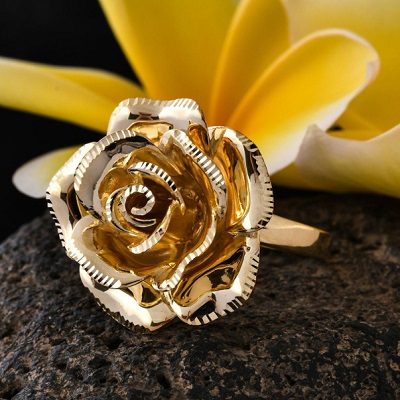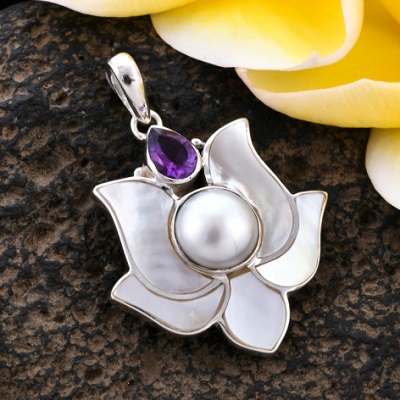Floral Jewelry
Category: Collection | Date: 05/20/2020

Flowers have always been a constant source of inspiration for jewelry designers. It's not just their appealing shapes but vibrant hues and natural patterns too that inspire these designers to emulate the same in their art. Embracing the fragility and brief life of blooms into something more perpetual, floral jewelry looks no different than the work of wearable art.
From coupling the spiritual meaning of gems with figuration of flowers to capturing their fascinating irregularity and intricate curves in exquisite carvings, artisans leave no stone unturned to emulate the heavenly beauty of blooms. Connoting rich symbolism since time immemorial, a flower's transience is instantly immortalized when proffered as a jewelry piece.
History of Floral jewelry
- The early Georgian era witnessed the boom in floral jewelry. Dainty and asymmetrical patterns were gaining recognition. During this time, floral motifs were gaining quite a popularity.
- Floral jewelry made a comeback in the Early Victorian era when the jewelry designers were a little inclined towards crafting accessories with romantic sentiments. Jewelry sets inspired by floral design that looks more ingenious and realistic, become quite popular.
- Towards the end of the Victorian era, floral jewelry again witnessed a warm welcome with the discovery of diamond mines in South Africa. Nature-inspired designs evoke more delicate tones, took the reins, and jewelry pieces with floral decor come into bloom.
- Art Nouveau and Edwardian Era also behold the affinity for floral jewelry. While the former emphasizes exhibiting artistic inspiration from nature via flowers, the latter drives its insight from the late eighteenth century for drafting motifs in the garland style.
- Famed for its enticing combinations, Art Deco jewelry also showcases the fascinating geometric and symmetric patterns via stylized floral carvings.
The symbolism of Floral jewelry
Different flowers bespeak different ideals of life. While some are associated with modesty and innocence, others are said to represent virtue, majesty, and a lot more. Steeped in symbolism and meaning, the following are few flowers with their denotation inspiring the jewelry designs and the intent of "speaking it all in the language of flowers":
Roses: Different colored rose connotes different emotions. A yellow rose is said to represent friendship, while a pink rose symbolizes gratitude. Blue rose denotes unattainable, while white rose is figurative of virtue.
Lilies: White lilies are said to be symbolic of chastity and virtue, while yellow lilies are supposed to represent gaiety.
Peonies: Peonies were considered as the 'King of flowers' in China, and jewelry immortalizing their beauty deserves to be a part of the royal collection.
Lotus: Lotus is symbolic of spiritual awakening as well as enlightenment.
Modern-day floral jewelry trends

In her book, Floral jewels published in 2014, British author Carol Woolton has presented the fascinating history and charms of these accessories inspired by botanical patterns from renowned jewelry houses. The book constitutes of the historical past of the floral designs to illustrations to original sketches to gouache paintings exhibiting the process of these blooms transformed into ageless ornate pieces.
Inspired by the same, a special exhibition was hosted by Sotheby's New York featuring the ever-enduring beauty of flowers in jewelry designs in May 2019. Masterpieces ranging from 19th-century brooch with a necklace to the rose ring molded in patinated bronze conjured all the attention effortlessly. An absolute hit for the year, the event proves the floral jewelry is nothing but an absolute classic.
Aatman listing trends for the year 2020 have included floral jewelry as Romantic flora, going way beyond that usual bridal staples. When she says, "nothing speaks romance like flowers, and we can all agree on that," there isn't anything we can agree more upon.